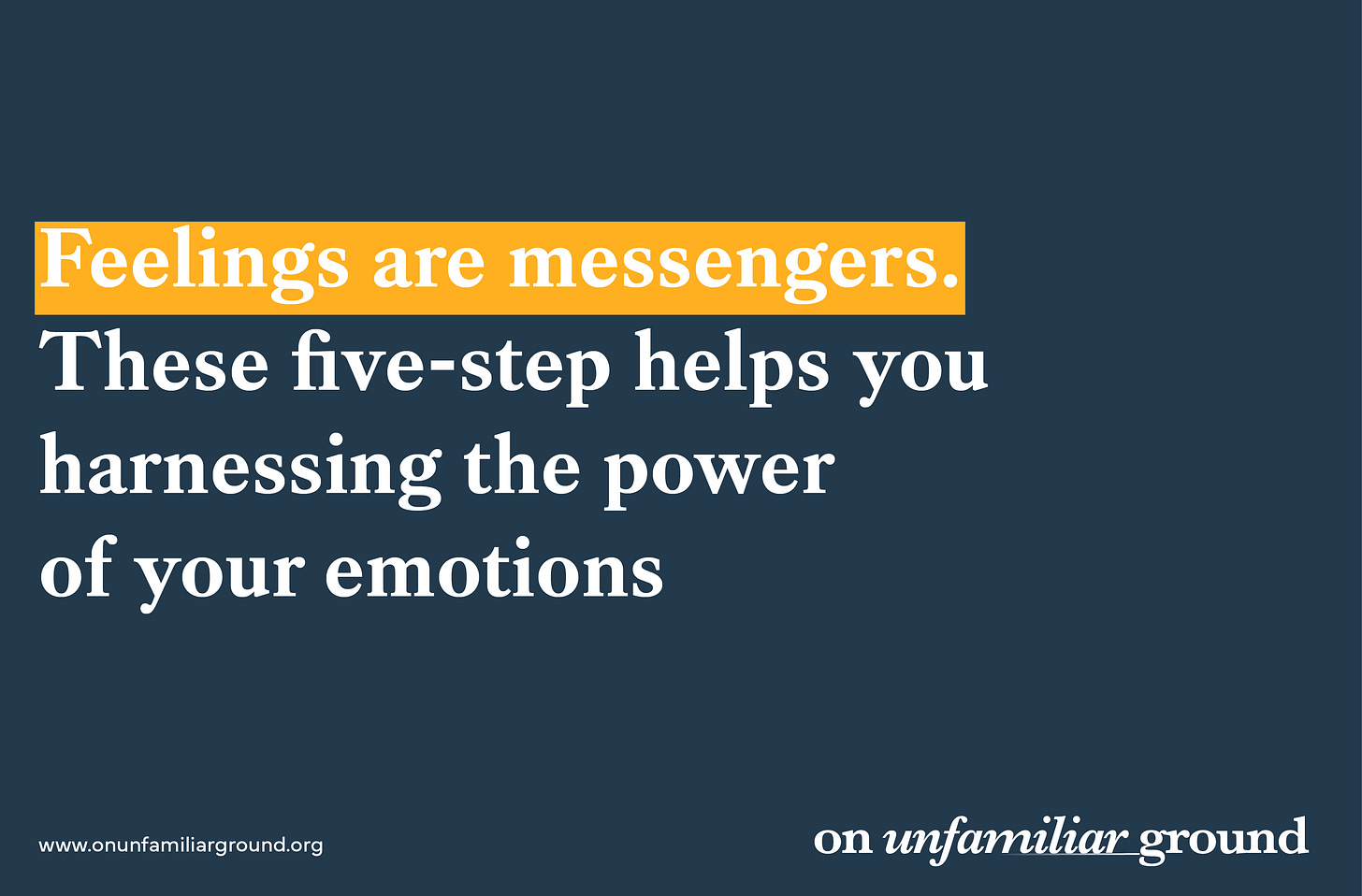A five-step guide to harnessing the power of your emotions
Most of the time, we just notice our feelings without truly feeling them. But all our sensations have a location, a shape, a flow, and sometimes even a color or a texture. And all those properties can
Ever thought about how feelings feel? That might seem like a strange question. Most of the time, we notice our feelings without truly feeling them. But all our sensations have a location in our body; they have a shape, a dynamic, and sometimes even a color. These properties can help us understand the messages behind our feelings.
Feelings are messengers. We typically feel discomfort, stress, or bewilderment if change is required. This five-step guide will help you use your emotions as a navigational aid, allowing you to understand your deepest drives and step into the transformational power that lies within. Try it out with a small, maybe personal situation. Once you’ve adapted to it, use it to ask yourself what kind of societal change you want to create.
Step 1: Dive into the situation
Create a safe space where you can work undisturbed. Relax. If you find visual aids useful, perhaps have a pen and a piece of paper to hand.
Think of a situation where you felt uncomfortable, when you wanted to hide, leave, or change. Allow your feelings to arise.
Step 2: Locate your feeling and connect with it
Stay calm and observe what kind of thoughts and feelings arise. If a particular feeling is more intense, focus on that. Where is it located in or around your body? How does it feel? What shape, form, and color does it have? Invite it in and connect with that feeling.
Step 3: Ask yourself
Hold that connection and ask yourself: what do I want to create? Or: what do I want to change? Be patient. Let the answers arise at their own pace. If you have lost your connection to your feelings, gently begin again and reconnect.
Step 4: Ask yourself again
After a while, the emergence of answers will slow down. Take a break. And then ask yourself: given all that has arisen, what do I want to create? What do I want to change? Repeat this step until you have gained clarity. You will recognize this by the power of your answer.
Step 5: Ask for the first step
Once you know what you are being called to change or create, take a moment to turn towards yourself in silence. Connect with your self, and then ask: what’s the first step towards making this happen? Wait for the answer. Act.
Sometimes, we already have an idea of what we want to change, but most often this idea is either too vague or simply borrowed from someone else. Sometimes, we just complain about a situation without really understanding what it is we want to change.
This method helps you to get beyond your typical thought patterns in order to delve deeper.
It’s also good for working in pairs, where one is the explorer while the other helps her navigate those questions. In this case, as a facilitator, be aware not to be pushy, to react to what the explorer shares, or to ask other questions. The responsibility for the process is always with the explorer, not the facilitator.



Gabriel, thanks for this offering. In my daily qi gong practice I try to distance myself from the dominance of emotions, idea and thoughts in order to feel my body so I see your point about connecting into what we are feeling and experiencing.